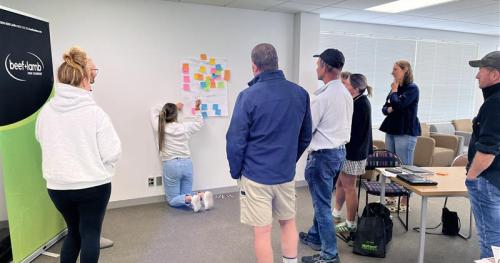Search results
Displaying 701 - 710 results of 1426
- News… small group learning initiative, is rolling out across the country. Four groups in the Wairarapa and Tararua area recently met to …

- … We partnered with the Federation of Maori Authorities' (FOMA) to launch the Performance Plus Mixed Livestock programme across 20 farms throughout the North Island; with funding support … About the programme The programme was born out …
- … support for farmer focus groups where the outcomes and solutions developed can … provide new information and ‘know how’ for other sheep and beef farmers. … groups or subject-specific activities. Find out more Contact your local extension manager …
- Factsheet… who pool capital skills resources together doing partnership have potential achieve … farm business which may otherwise have been out reach pooled resources skills can improve … next week paul gives matt list things think about organise meet week later discuss things …
- … The Government is working on updating the … where they stand. We have been clear throughout this process that not enough time has been … is not a comprehensive list but should help outline some of the important aspects of the …
- … will set rules for agricultural land use in the Waikato and Waipā catchments. This page contains the latest information on PC1. … the Court) B+LNZ needs to be careful about what it says. This page will be updated as …
- … crop within standing maize fields before the maize is harvested. … agricultural practice designed to harness the dual benefits of growing additional winter … feed for lamb fattening while protecting the soil from winter weather. This project …
- … in particular you would like us to know about RMA Reform, please complete the survey above or email us at … On 9 December 2025 the Government released the legislation that … properly understand the potential impact without seeing the secondary legislation (e.g. the …
- … better for animals better for you better for the planet better for communities. We encourage you to check it out and help us bring some balance to conversations about food production. … develop a website containing proven facts about New Zealand’s farming methods and how our …
- News… B+LNZ made its submission on the Government’s RMA reform consultation on … a substantial reform process is well thought-out and will lead to positive change. … expressed across the sector, and beyond, about the process to date, and the resulting …
